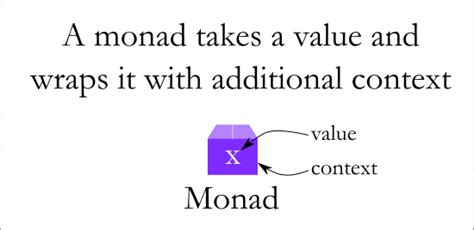Monads are one of those concepts that can baffle programmers, no matter their level of expertise. They evoke a mix of dread, intrigue, and sometimes downright confusion. The analogy of monads being like burritos might sound whimsical or even ridiculous at first, but as we sift through the layers of commentary from various programming communities, it turns out, it is a metaphor that helps some grasp this otherwise dense concept. In essence, breaking down the programming jargon into more easily digestible chunks, much like bites from a burrito, can sometimes be the bridge to understanding.
The joke starts off light. ‘How many bites does a monad burrito take to eat?’ The humor here, particularly among those seasoned with category theory and functional programming concepts, is in the absurdity and granularity that discussions around monads can often devolve into. Monads aren’t typically a dinner table subject unless your table is filled with Haskell enthusiasts. The burrito, with its layers and layers of ingredients carefully wrapped, serves as a playful yet meaningful analogy to explain how monads encapsulate these layers of computations which can be unraveled one step at a time with operations like `bind` (or `flatMap`). This analogy brings a smile while hinting at the complexity involved – much like an intricate burrito that fills you up with just a bite.
As we dive deeper, some recount that a burrito is simply a lasagna in the category of endofunctors. The playful nod to category theory is not lost on seasoned programmers. An endofunctor is a functor that maps from a category to itself, creating a tongue-in-cheek linkage to how a burrito, similar to lasagna in its layered structure, represents a self-contained set of operations. These layered structures are crucial for understanding monadic composition, which allows for complex data manipulations in a seamless, consistent manner. This analogy, while humorous, ties into the broader point that monads, in essence, allow for a consistent methodology to handle side-effects and chaining functions in functional languages.
The purpose and utility of monads become a more pressing point of discussion. One comment draws attention to how monads are generalized descriptions that can cover a plethora of scenarios – from lists, optional values to future promises. This abstraction is one of the strengths of monads in a language like Haskell, which emphasizes purity and minimizing side-effects. The comments reflect a fundamental reality: while monads provide an elegant solution to managing side-effects and promoting compositionality, their abstract nature can make them seem impenetrable to newcomers. Another comment eruditely notes that Haskell was one of the pioneering languages to effectively leverage monads, facilitating a pure functional approach to handle side-effects robustly.
On a more practical level, monads embody the principle of ‘chaining’ functions, making each function’s output seamlessly combine with the next. In JavaScript, the concept is somewhat mirrored by arrays being ‘flatmappable’. In languages like Scala and C#, the implementation extends even further, showcasing the versatility of monads. As one commenter pointed out, Python’s generator functions can demonstrate monadic-like behaviors when properly structured, highlighting the universality and adaptability of these concepts across programming paradigms. However, it is pointed out that streamlining these operations, although powerful, can sometimes become cumbersome.
Diving into the philosophical, some comments express skepticism regarding the practical relevance of monads outside of theoretical or highly specialized contexts. Fundamentally, monads provide a powerful abstraction, but as noted, can often be overcomplicated or misrepresented. This, as some commenters point out, leads to the so-called ‘monad tutorial fallacy’, where the attempt to demystify monads with various analogies ends up muddying the waters even further. Counter-examples are suggested as a potential method to clarify monads by distinguishing them from similar constructs that just miss the monadic mark. This dialog reflects an ongoing struggle within the programming community to make such high-level abstractions accessible and practical.
A tangible approach to alleviate this complexity might lie in examples and practical usage scenarios. The analogies to side effects, whether they be in burritos or Taco Bell bathrooms, while humorous, also reinforce the real-world implications and the need for a system to manage these effects cleanly. As noted in one of the more insightful comments, the `IO monad` in Haskell elegantly structures these side-effects, a necessity in a purely functional language. By constructing what is essentially a blueprint of actions, `IO` allows Haskell to manage side-effects without compromising purity, showcasing one of the most compelling applications of monads. Lastly, tutorials such as those found in


Leave a Reply